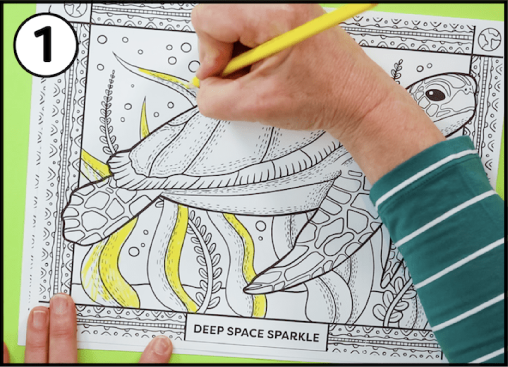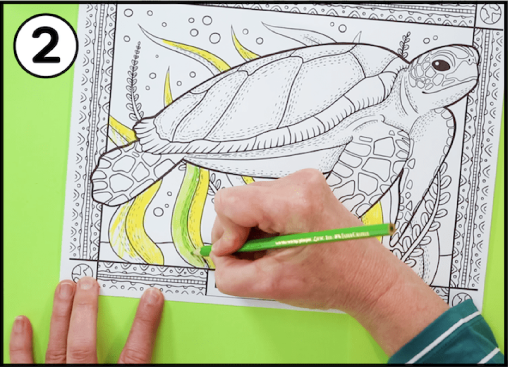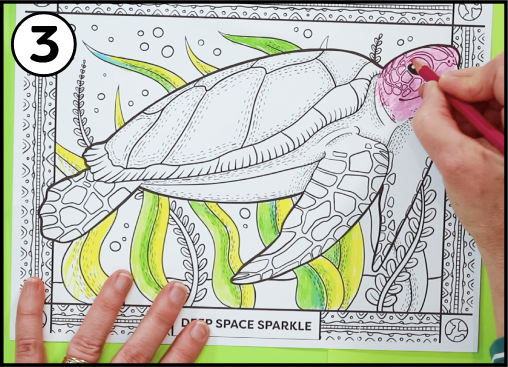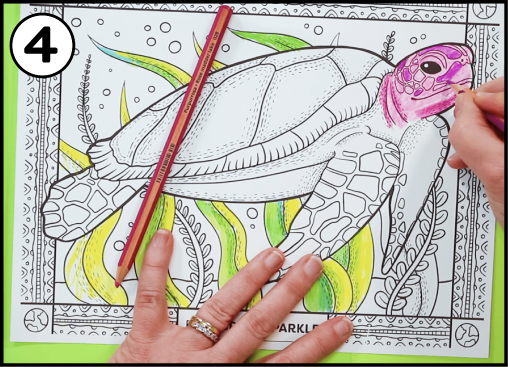
Special technique: Coloured Pencils
WHAT YOU’LL NEED:
1. Colouring pages2. Coloured pencils.
THE LADDER METHOD

To help avoid scribbling, especially with your students, I teach them the ladder method. The ladder method can help give students a bit more structure and focus and make their colouring more efficient.
Choose one coloured pencil and pick a shape to begin colouring in. Start at the top of the shape and colour in a small section from left to right, like a thick stripe. Move down, like you’re stepping down to another rung on the ladder, and repeat. Continue until you fill in the entire shape.
Choose one coloured pencil and pick a shape to begin colouring in. Start at the top of the shape and colour in a small section from left to right, like a thick stripe. Move down, like you’re stepping down to another rung on the ladder, and repeat. Continue until you fill in the entire shape.
PLANNING YOUR COLOURS

It can eat up a surprising amount of time if students switch their colour each time they come to a new shape; especially if they’re sharing materials with others.
Instead, I encourage students to use a bit of planning in their colour strategy. If they use yellow first, encourage them to look at their picture and colour in everything on their page that will be yellow first. Then they can move on to another colour and repeat the process.
This avoids excessive time spent looking for certain colours and waiting for others to finish using those colours. It also helps students to focus and start thinking of their artwork as a whole.
Instead, I encourage students to use a bit of planning in their colour strategy. If they use yellow first, encourage them to look at their picture and colour in everything on their page that will be yellow first. Then they can move on to another colour and repeat the process.
This avoids excessive time spent looking for certain colours and waiting for others to finish using those colours. It also helps students to focus and start thinking of their artwork as a whole.
ADDING DETAILS
Small detailed areas can be tricky to colour in and it can take a long time to colour around details, like the spots on the turtle. Instead of colouring the details first and then adding the background colour, which is typically what students want to do, I encourage them to colour the background first. Choose the colour for your background first, then colour the entire section (including the details). After the background is coloured, then choose another colour to layer on top for the details.ADDING FORM

Coloured pencils are great for their ability to layer and produce lots of values. Value is the lightness or darkness of a colour. Using both light and dark values can help give the look of form, or being three-dimensional which helps make your artwork look more realistic.

Don’t know where to add value? We have you covered! Look for the areas with dashes on DSS Colouring Pages.
With these simple tips, your students are bound to find more relaxation, joy and success while using coloured pencils. You might be tempted to jump right in and join them!
With these simple tips, your students are bound to find more relaxation, joy and success while using coloured pencils. You might be tempted to jump right in and join them!
Credits to the original colouring technique by Deep Space Sparkle
